MARKET OVERVIEW
The Middle East and Africa telecom market is a vast business dictated by different geographies, cultures, and economic models. Unlike much of the world, it will not be dictated by a single trend or even a single set of homogeneous consumer trends. Instead, it will be carrying the baggage of nations which are themselves at different stages of technology adoption. There are nations that will build advanced infrastructure with fiber networks and 5G offerings, while others will keep building access to basic connectivity. That contrast will make the industry one of the most multi-layered globally, with advanced innovations and fundamental services existing side by side. Telephony in the Middle East and Africa will not just be about enabling phone calls or internet connectivity. It will emerge as an essential infrastructure of daily life and business transactions.
Cities will also move towards computerized services, integrating transport, trade, and education into one network. Rural communities and remote areas will have to depend on mobile operators to provide their very first gateway to the digital universe. Telecom industry will shoulder the responsibility of filling such gaps, shaping the ways societies communicate, learn, and conduct business. What will differentiate the Middle East and Africa telecom market will be the way in which local pressures will shape it. Oil-based economies will use telecom infrastructure to diversify beyond hydrocarbons, investing in high-end digital economies. On the other hand, the majority of African nations will see mobile networks as tools for social and economic inclusion, offering millions access to banking, healthcare, and education services without the need for conventional infrastructure. These trends will demonstrate that the industry will not be all technology but will be strongly connected with development goals.
The role of governments will remain supreme in this market. Regulatory choices will determine competition, prices, and innovation. Private investment strategies will determine how quickly new technology will be adopted, and public-private partnerships will bring connectivity to locations that might not be economical for an operator to do alone. So in a way, the marketplace will be as much about collaboration as competition. In the years to come, the Middle East and African telecom market will continue to evolve based on global digital trends but would never be less regional in flavor. Upgrades of networks, securing data, and providing more services will become more imperative. But the path ahead will not be a simple mimicry of Western or Asian trends. It will be influenced by regional realities such as geography, price sensitivity, and regulatory environments.
The industry will then possess a unique story, one that embodies the promise of high-tech and the necessity of basic access. All in all, the Middle East and Africa telecom industry will be a business where progress will be something more than faster internet. It will be how two continents, with differing levels of readiness, will use connectivity to shape their economic and societal futures. Every step taken in its expansion will not only improve communication but reframe opportunity for tens of millions of people.
Middle East and Africa telecom market is estimated to reach $127.4 Billion by 2032; growing at a CAGR of 3.4% from 2025 to 2032.

GROWTH FACTORS
The Middle East and Africa telecom market is moving toward a future shaped by rapid technological adoption, changing consumer needs, and large-scale infrastructure development. Expansion in digital connectivity will play a major role, as more governments and private companies invest in modern communication systems to meet the demand for faster and more reliable services. Urbanization is creating greater pressure on networks, leading to the need for advanced solutions such as 5G, fiber optics, and cloud-based platforms. With smartphone usage increasing at a significant rate, mobile data services are expected to see continuous growth, making digital access more affordable and accessible to wider populations.
Growth factors such as rising internet penetration and strong government support for digital transformation will encourage steady progress. Increased efforts to develop smart cities, digital banking, and e-learning platforms will strengthen the market by boosting the need for reliable communication networks. Partnerships between global telecom leaders and local operators will improve knowledge transfer and speed up the adoption of advanced technologies. In addition, e-commerce platforms, online entertainment, and digital health services will create new layers of demand, giving the market stronger long-term growth prospects.
Despite these positive drivers, the Middle East and Africa telecom market might face hurdles. Infrastructure gaps in rural areas remain a challenge, as connectivity in remote locations often requires high costs and long timelines. Political and regulatory uncertainties in certain regions may also slow down investments and delay projects. Furthermore, cybersecurity threats continue to grow, raising concerns about data protection and network stability. These issues could limit the full potential of expansion if not addressed effectively.
Looking ahead, innovative technologies will provide lucrative opportunities for the market in coming years. The introduction of 5G networks across more countries will open doors for advanced applications, including autonomous systems, virtual services, and real-time communication tools. The rising popularity of artificial intelligence and Internet of Things solutions will further strengthen connectivity needs, creating business opportunities across industries such as healthcare, manufacturing, and transport. Green and sustainable network initiatives will also attract investments, as companies and governments aim to reduce energy consumption while improving efficiency.
The future of the Middle East and Africa telecom market will depend on how quickly barriers are resolved and how effectively opportunities are embraced. With consistent growth drivers in place and ongoing technological advancements, the sector is positioned to become a vital contributor to economic development and digital transformation in the region.
MARKET SEGMENTATION
By Service Type
The Middle East and Africa telecom market is moving toward a future shaped by rapid growth and new technological opportunities. Continuous demand for faster communication, wider coverage, and improved connectivity will play a major role in how this sector develops. As more people gain access to digital services, the region will see a rise in new investments and infrastructure expansion. This shift will not only support everyday communication but also create the foundation for digital economies, education, and modern industries.
One of the strongest forces behind the Middle East and Africa telecom market will be the growth of mobile services. Mobile services will continue to attract the largest share of users because of their flexibility and affordability. With increasing smartphone penetration and cheaper data plans, mobile networks will support a wider range of activities such as online learning, e-commerce, digital banking, and healthcare services. The demand for 5G will further enhance mobile services by providing faster speeds and lower latency, allowing users to connect more devices and access new applications. This growth will push service providers to invest in advanced infrastructure while maintaining affordability to reach underserved areas.
Fixed services will also play a crucial role in shaping the future of the market. Fixed broadband will become increasingly important for businesses, institutions, and households that require stable and high-capacity connections. The expansion of fiber optic networks will improve reliability and performance, supporting sectors such as finance, education, and government operations. While mobile services will reach the largest number of users, fixed services will remain essential for creating strong digital backbones that can handle large amounts of data. This balance between mobile services and fixed services will define the future growth of the industry.
The Middle East and Africa telecom market will also benefit from rising collaboration between governments, private investors, and international partners. Investment in infrastructure, policy support, and training will ensure that the market can keep up with global standards. As digital transformation continues to spread across industries, the telecom sector will become a vital driver of economic growth and innovation. Expansion in both rural and urban areas will help bridge the digital divide, giving more people access to information and opportunities.
Looking ahead, the Middle East and Africa telecom market will continue to expand through strong demand, improved technology, and a growing digital culture. With both mobile services and fixed services working together, the region will build a connected future that supports progress, inclusivity, and sustainable growth.
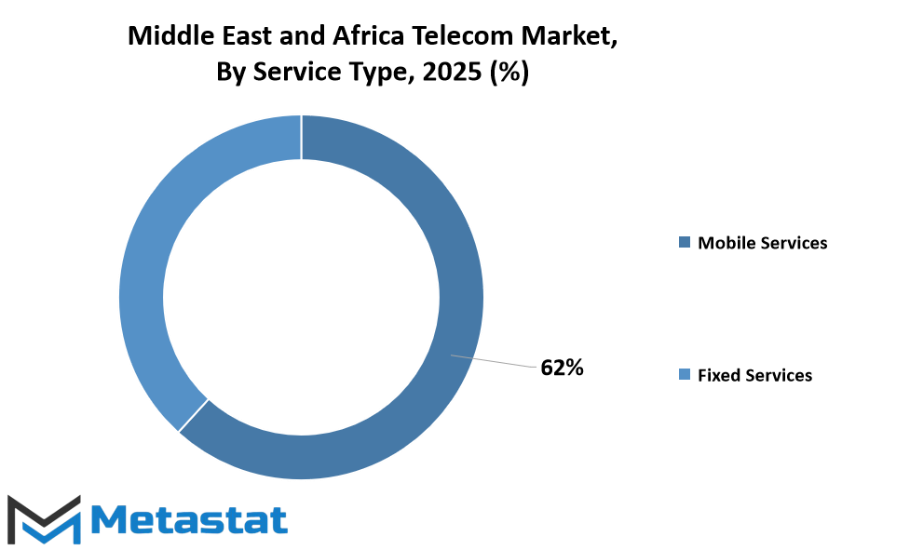
By Technology
The Middle East and Africa telecom market is moving through a stage of steady transformation, driven by rapid technological advances and increasing demand for digital connectivity. With populations that are young and highly engaged with mobile technology, the region will continue to expand its communication networks in ways that bring long-term change to business, education, healthcare, and daily life. The adoption of faster and more reliable connections will open the door to new industries and support growth in sectors that depend on constant access to information.
By technology, the market is divided into 4G/LTE, 5G, Fiber Optics, and Others. Each of these segments plays a unique role in shaping connectivity. 4G/LTE remains a critical part of communication networks across many countries, offering wide coverage and affordable access. However, the shift toward 5G is already becoming a key factor in the market, promising faster speeds, lower latency, and the ability to handle millions of connected devices at once. This move will support applications such as smart cities, advanced manufacturing, and real-time data services that depend on high-speed networks.
Fiber optics is another important part of the Middle East and Africa telecom market. The expansion of fiber infrastructure will be necessary to handle the growing amount of data generated by both individuals and businesses. Fiber provides the backbone that allows mobile networks, cloud computing, and digital services to function efficiently. While the investment required is significant, the long-term benefits of building fiber networks will be clear in improved stability, higher speeds, and the ability to meet the demands of future technologies.
The “Others” category includes a variety of solutions such as satellite and fixed wireless, which continue to play a role in remote or underserved areas. In many parts of the Middle East and Africa, these technologies will remain vital for reaching communities where laying fiber or building extensive mobile networks is not immediately possible. Such solutions ensure that no region is left behind in the broader move toward digital transformation.
Looking ahead, the Middle East and Africa telecom market will not only strengthen connectivity but also create opportunities for innovation, new business models, and social progress. Investments in 4G/LTE, 5G, fiber optics, and other solutions will build the foundation for a future where communication is faster, smarter, and more inclusive. This future will shape how people live, work, and connect across the region.
By Transmission
The Middle East and Africa telecom market will continue to grow as digital transformation becomes a key driver for economic and social development. Rapid urbanization, increased internet penetration, and the rising demand for seamless connectivity will encourage significant investment in both infrastructure and technology. Governments and private operators will work toward expanding networks to meet the demands of a young and tech-savvy population that expects reliable communication services. With economic diversification underway across many countries, the telecom sector will act as the backbone for progress in industries such as education, healthcare, and financial services.
By transmission, the Middle East and Africa telecom market is further divided into Wireless Transmission and Wireline Transmission, and both will play essential roles in the future. Wireless Transmission will gain momentum due to the widespread use of smartphones and the adoption of 5G technology, which will provide faster speeds and lower latency. This shift will open new opportunities for smart cities, digital payments, and advanced applications like augmented and virtual reality. Wireline Transmission, while not expanding at the same pace, will still remain vital, especially in enterprise solutions and data centers, where high-capacity and stable connections are critical. Both transmission methods will complement each other, creating a more balanced and inclusive telecom ecosystem.
A key factor shaping the market will be the adoption of cloud services and artificial intelligence. As businesses move toward automation and data-driven operations, telecom providers will invest in modern networks that can handle massive volumes of information. This development will also support government initiatives aimed at improving public services and strengthening digital economies. Moreover, the introduction of Internet of Things (IoT) devices will boost connectivity needs, driving further upgrades in both wireless and wireline networks.
Affordability and accessibility will remain challenges, yet solutions are expected to emerge through partnerships and regulatory reforms. Efforts will focus on reducing the digital divide by extending coverage to remote and underserved areas. Rural expansion projects, backed by both private investment and government support, will ensure that connectivity is not limited to urban centers. This inclusion will encourage innovation and entrepreneurship, creating opportunities for growth across multiple sectors.
Looking ahead, the Middle East and Africa telecom market will become more than a service provider, evolving into an enabler of transformation. The combination of advanced technologies, supportive policies, and growing consumer demand will ensure continuous progress. Both Wireless Transmission and Wireline Transmission will have distinct yet equally important roles in shaping a connected future that supports economic resilience and social development across the region.
By Region
The Middle East and Africa telecom market is entering a phase of significant change that will reshape communication, connectivity, and digital access in the coming years. Growth in this sector will be driven by rising demand for high-speed internet, the adoption of 5G technology, and the expansion of digital services that support both businesses and households. Increasing mobile penetration and the surge in data consumption are pushing operators to invest in modern infrastructure, which will make networks faster, more reliable, and able to handle heavier data traffic. This transformation will not only improve communication but also provide a foundation for innovation in areas such as digital banking, e-commerce, and smart cities.
By region, the market is divided into Saudi Arabia, Egypt, South Africa, Nigeria, UAE, Iran, Israel, Qatar, and the rest of Middle East and Africa. Each of these areas will play a unique role in shaping the market’s direction. Saudi Arabia and the UAE are expected to strengthen their positions as technology leaders through rapid 5G deployment and heavy investment in smart infrastructure. Egypt and Nigeria, with their large and young populations, will likely drive the demand for affordable data and mobile services, encouraging companies to explore cost-efficient and scalable solutions. South Africa will continue to serve as a hub for digital innovation, while Iran, Israel, and Qatar will contribute with advancements in technology integration and policy support. The rest of the Middle East and Africa will gradually adopt these changes as connectivity becomes more affordable and accessible.
The future of the Middle East and Africa telecom market will be shaped by how well it adapts to increasing digital needs. As more devices connect through the Internet of Things, networks will need to expand capacity while ensuring strong security and stable performance. Investments in fiber optic networks, cloud computing, and data centers will be essential to support the growing digital economy. Partnerships between telecom operators, technology providers, and governments will also guide how quickly these advancements reach the public.
The direction of this market shows that telecom services will no longer be limited to calls and messages. They will form the backbone of digital lifestyles and future business models. With continued growth and innovation, the Middle East and Africa telecom market will become one of the strongest drivers of economic development, digital inclusion, and regional progress.
|
Forecast Period |
2025-2032 |
|
Market Size in 2025 |
$101.2 billion |
|
Market Size by 2032 |
$127.4 Billion |
|
Growth Rate from 2025 to 2032 |
3.4% |
|
Base Year |
2024 |
|
Regions Covered |
Middle East & Africa |
COMPETITIVE PLAYERS
The Middle East and Africa telecom market is moving toward a period of transformation that will reshape how services are delivered and consumed across the region. Rapid advancements in technology, coupled with the rising demand for digital connectivity, will continue to drive expansion in this sector. Growing populations, urbanization, and increased reliance on digital platforms are fueling the need for stronger infrastructure, faster networks, and innovative solutions. As more communities adopt mobile and internet services, the foundation is being laid for the next wave of economic and social growth.
The Middle East and Africa telecom market will remain highly competitive as leading companies push to strengthen their presence and capture larger shares of the customer base. Among the key players shaping this industry are Saudi Telecom Company (STC) Group, Etisalat Group, Ooredoo Group, Zain Group, Oman Telecommunications Company, Telecom Egypt, Mobily, Vodafone Group, Orange S.A., and VEON LTD. Each organization is investing heavily in modernizing infrastructure, expanding 5G coverage, and preparing for future technologies that will transform communication and connectivity. These companies are not only competing on pricing and coverage but also on digital innovation, customer experience, and value-added services.
The drive toward digital economies across the region will ensure that the Middle East and Africa telecom market keeps evolving. Governments and regulators are encouraging investment in digital infrastructure, while partnerships between telecom operators and technology providers are bringing fresh opportunities. The expansion of cloud services, data centers, and internet of things (IoT) applications will further enhance growth and create a more connected environment. This shift will support industries such as healthcare, education, finance, and transport, making telecom networks the backbone of broader economic progress.
Competitive players will continue to explore mergers, acquisitions, and alliances to gain strategic advantages. With digital transformation becoming a top priority, operators are focusing on strengthening cybersecurity, enhancing mobile payment solutions, and enabling smart city projects. By adopting advanced technologies such as artificial intelligence and automation, service providers will improve efficiency and deliver more personalized solutions to users.
The Middle East and Africa telecom market is set to play a critical role in shaping the region’s digital future. As competition intensifies, the companies that can innovate, adapt quickly, and build resilient networks will lead the way. The coming years will highlight how competitive players influence not just the telecom industry but also the broader digital landscape that supports economic and social development.
Middle East and Africa Telecom Market Key Segments:
By Service Type
- Mobile Services
- Fixed Services
By Technology
- 4G/LTE
- 5G
- Fiber Optics
- Others
By Transmission
- Wireless Transmission
- Wireline Transmission
By Region
- Saudi Arabia
- Egypt
- South Africa
- Nigeria
- UAE
- Iran
- Israel
- Qatar
- Rest of Middle East and Africa
Key Middle East and Africa Telecom Industry Players
- Saudi Telecom Company (STC) Group
- Etisalat Group
- Ooredoo Group
- Zain Group
- Oman Telecommunications Company
- Telecom Egypt
- Mobily
- Vodafone Group
- Orange S.A.
- VEON LTD
WHAT REPORT PROVIDES
- Full in-depth analysis of the parent Industry
- Important changes in market and its dynamics
- Segmentation details of the market
- Former, on-going, and projected market analysis in terms of volume and value
- Assessment of niche industry developments
- Market share analysis
- Key strategies of major players
- Emerging segments and regional growth potential



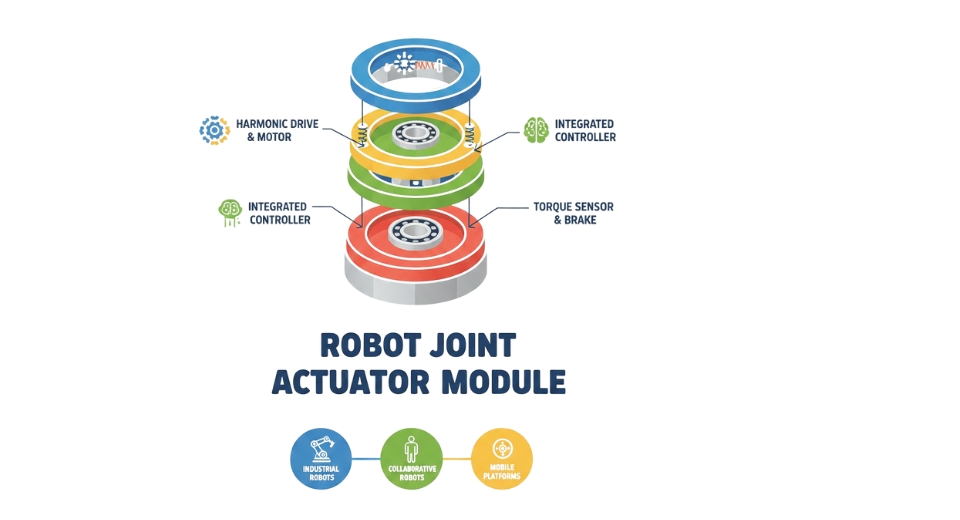
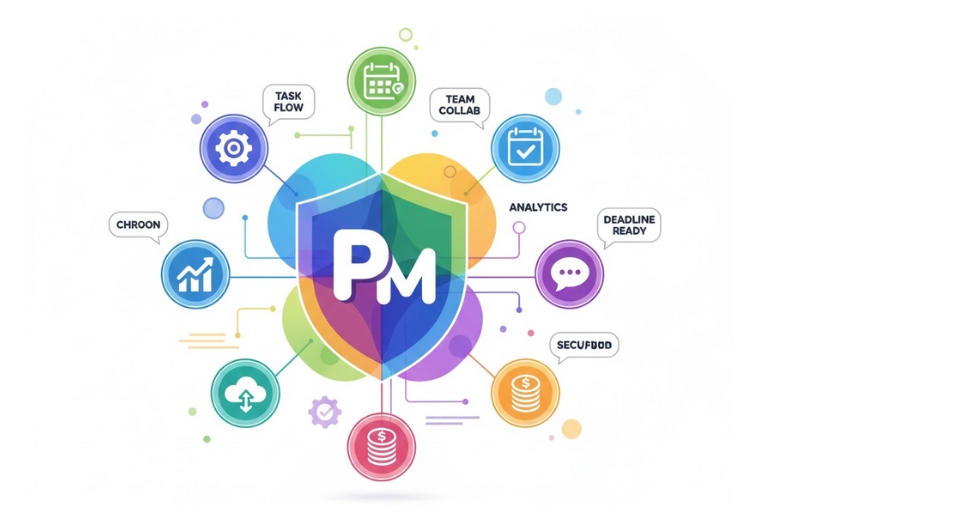
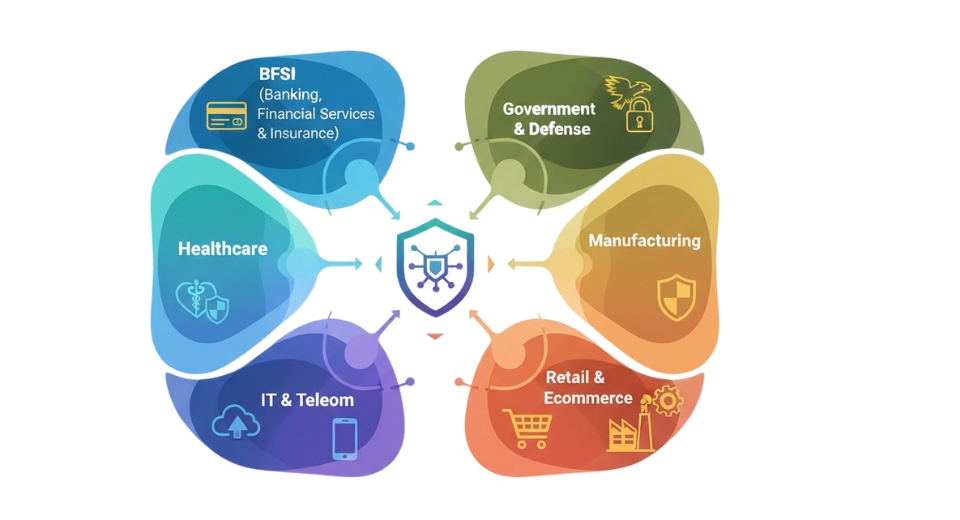
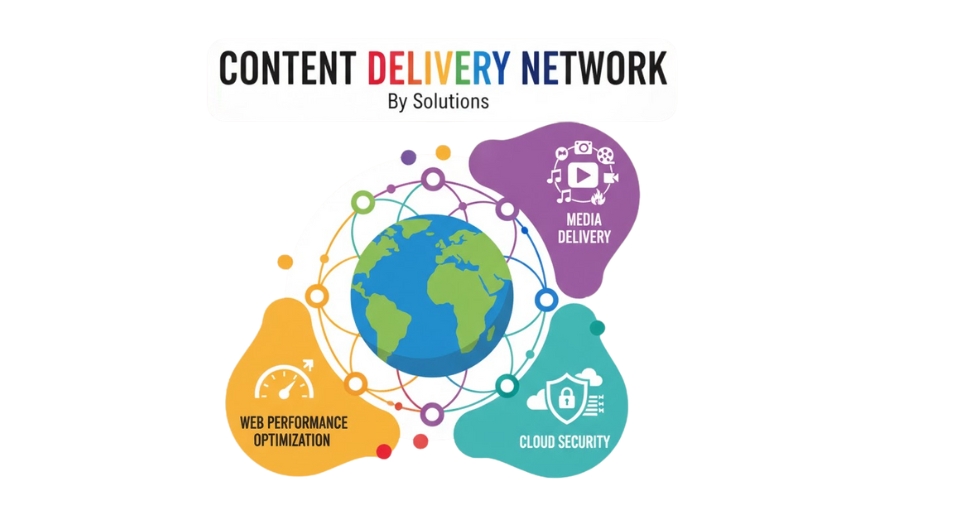

 US: +1 3023308252
US: +1 3023308252






